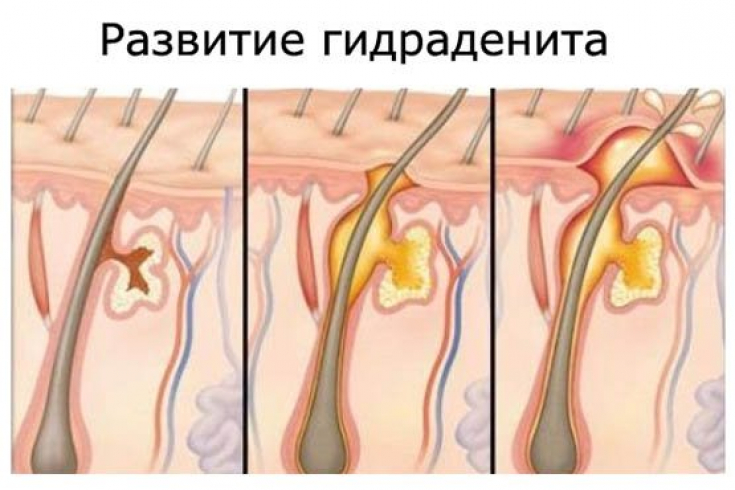Dermcidin, an antimicrobial peptide, commonly found in human sweat, may play a key role in the pathogenesis of the chronic skin disease hidradenitis purulenta, according to a research team from George Washington University in the US. Their results were recently published in Clinical and Experimental Dermatology.
Purulent hydradenitis — is a chronic, relapsing inflammatory disease of the apocrine sweat glands that affects 1-4% of people and is most common in young people. There are several treatments that can help relieve symptoms, but there is no substantially effective therapy for this pathology. Traditional treatments are still disappointing. However, TNF-α inhibitors such as infliximab and adalimumab have been shown to be effective.
In the article estet-portal.com you can get acquainted in detail with new discoveries that shed light on the pathogenesis of purulent hidradenitis.
Key skin differences that contribute to hidradenitis suppurativa
A team of researchers analyzed transcriptome patterns in the skin of patients with hidradenitis suppurativa to identify transcripts and regulators that are not expressed in patients' skin compared to normal skin.
The study showed that dermcidin had significant structural variability in patients with hidradenitis suppurativa and the amount of protein was significantly lower when comparing samples.
Immune dysregulation probably contributes to the pathogenesis of hidradenitis suppurativa.
The researchers also found that the expression of IL-37, a cytokine known to be a natural suppressor of innate immune responses, was downregulated in skin samples from patients with hidradenitis suppurativa compared to control.
Follow us on Facebook
Dermcidin and IL-37: what is the role in purulent hydradenitis
Expression of the antimicrobial peptide dermcidin and the regulatory cytokine interleukin (IL) 37 was significantly downregulated in skin samples from patients with suppurative hidradenitis (log dermcidin expression -3.93, expression P = 0.04; log IL-37 expression -3.29 , expression P <0.001).
MRNA expression was analyzed to study the transcriptome profile in hidradenitis suppurativa compared to control skin.
Immune activity analysis identified the interferon signaling pathway, the leukocyte extravasation pathway, the T-helper 1, 2 pathway, and the activated T-cell nuclear factor pathway as five positive active pathways in skin samples.
Therapy of long-term non-healing wounds with laser radiation
Perspectives of the data obtained regarding the pathogenesis of purulent hidradenitis
These data suggest that regulators of the innate immune response and, in particular, the production of antimicrobial peptides, may play a role in the pathogenesis of hidradenitis suppurativa. The findings suggest that numerous biological pathways are disrupted in hidradenitis suppurativa, indicating that inflammatory activity deserves further study as a potential contributor to the disease.

Further research is needed to fully understand the role of antimicrobial peptides, in particular dermcidin, in the pathogenesis of hidradenitis suppurativa and to establish whether this niche is suitable for the development of new therapeutic therapies for this disease.
Thank you for staying with estet-portal.com. Read other interesting articles in the "Plastic Surgery" section. You may be interested in What antiseptics to use in the treatment of burn wounds







Add a comment